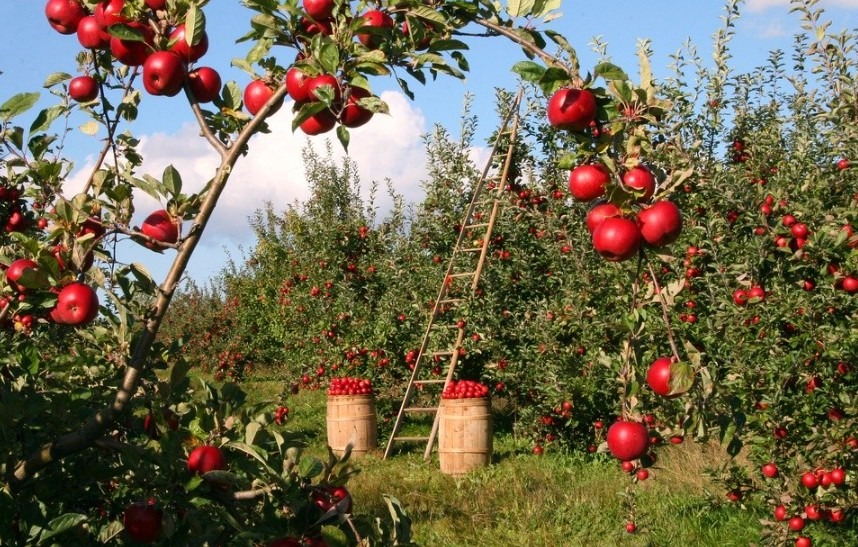A Comprehensive Guide to Choosing the Perfect Apple Tree for Your Garden
Introductory Interview:
In a brief interview with a seasoned expert in the realm of apple tree cultivation, we gathered essential insights into what to look for when navigating the world of apple tree sales. ChrisBowers, with decades of hands-on experience in horticulture, passionately shared his knowledge about selecting the best apple trees for your garden. Whether you’re a seasoned gardener or just starting, this guide will help you make informed decisions and ensure your apple tree purchase is a thriving investment.
Understanding What to Look For in the World of Apple Trees
When embarking on the exciting journey of purchasing an apple tree for your garden, it’s crucial to consider several factors to ensure your tree thrives and yields a bountiful harvest. Here, ChrisBowers imparts his wisdom on what to look for when navigating the world of apple tree sales.
1. Rootstock Selection
Rootstock selection is the foundation of your apple tree’s growth. Different rootstocks influence the size, vigor, and disease resistance of the tree. Chris advises, “Before purchasing an apple tree, research and select the appropriate rootstock for your space. For small gardens or containers, choose dwarf or semi-dwarf rootstocks to keep the tree’s size manageable. For larger spaces, standard rootstocks are suitable. Disease-resistant rootstocks are also worth considering, especially in regions prone to apple diseases.”
2. Apple Tree Variety
Chris emphasizes the importance of selecting the right apple variety, saying, “The choice of apple variety is paramount. Think about the kinds of flavors you like and the ways you intend to use the apples. Are you looking for sweet apples for snacking or tart ones for cooking and baking? Each variety has unique characteristics, so do your research and choose accordingly.”
3. Pollination Partners
Apples are not self-pollinating; they require another apple tree of a compatible variety for cross-pollination to produce fruit. Check to see if the apple tree you’re interested in needs another tree nearby for pollination, and select one that is appropriate for the size of your garden. Some varieties are self-fertile, while others require a different apple variety nearby.
4. Local Climate Considerations
Understanding your local climate is crucial when selecting an apple tree. There is a wide range of cold resistance in apples, depending on the variety. Make sure the variety you choose can withstand the typical weather conditions in your region. Consider factors like frost dates, rainfall, and temperature fluctuations.
5. Disease Resistance
Disease-resistant apple tree varieties are a smart choice, especially if you want to reduce the need for chemical interventions. Chris advises, “Look for apple varieties that are known for their resistance to common apple diseases like apple scab, powdery mildew, and fire blight. These trees will require less maintenance and offer a healthier fruit yield.”
6. Garden Space and Pruning
Consider the available space in your garden and how you plan to maintain the tree. Consider how big the tree will get and how it will work in the space you have available in your garden. If space is limited, choose a dwarf or columnar variety. Also, be prepared to prune your apple tree regularly to promote healthy growth and fruit production.
Navigating Apple Tree Sales
Now that you have a clear understanding of what to look for in an apple tree, let’s explore the steps to navigate the world of apple tree sales effectively.
7. Visit Local Nurseries
Local nurseries often carry a selection of apple trees suitable for your region. Visiting these nurseries allows you to see the trees in person, assess their health, and ask experts for advice on selecting the right variety for your garden.
8. Consider Online Options
In today’s digital age, many reputable online nurseries offer a wide range of apple tree varieties. When making purchases online, it is important to read reviews left by previous customers and research the nursery’s reputation. Ensure they provide detailed information about the apple tree’s rootstock, variety, and care instructions.
9. Choose Certified Trees
Opt for certified apple trees from trusted sources. Chris notes, “Certified trees are typically disease-free and have undergone rigorous quality control. They offer peace of mind and a higher likelihood of success.”
10. Inspect Tree Health
Whether you’re buying from a local nursery or online, thoroughly inspect the tree’s health. Look for signs of disease, such as discolored leaves or spots, and ensure the root system appears healthy.
11. Ask for Expert Advice
Don’t hesitate to ask for guidance from experts or experienced gardeners. If you need recommendations or advice, you should get in touch with the horticultural societies, garden clubs, or agricultural extension offices in your area. These experts can provide valuable insights into which apple varieties thrive in your area.
12. Plan for Proper Planting
Once you’ve made your purchase, ensure proper planting and care. Chris offers a final piece of advice, “Plant your apple tree in a sunny location with well-drained soil. Follow recommended planting and care instructions for your specific variety. Regularly monitor for pests and diseases and take prompt action if any issues arise.”
Conclusion: A Rewarding Investment
Navigating the world of apple tree sales might seem overwhelming, but with the guidance of experts and careful consideration of the factors mentioned, you can make an informed choice. Remember that planting an apple tree is an investment in years of delicious fruit and the beauty of your garden. So, take your time, select the perfect apple tree for your space, and enjoy the satisfaction of watching it grow and flourish in the years to come. Happy apple tree shopping!

